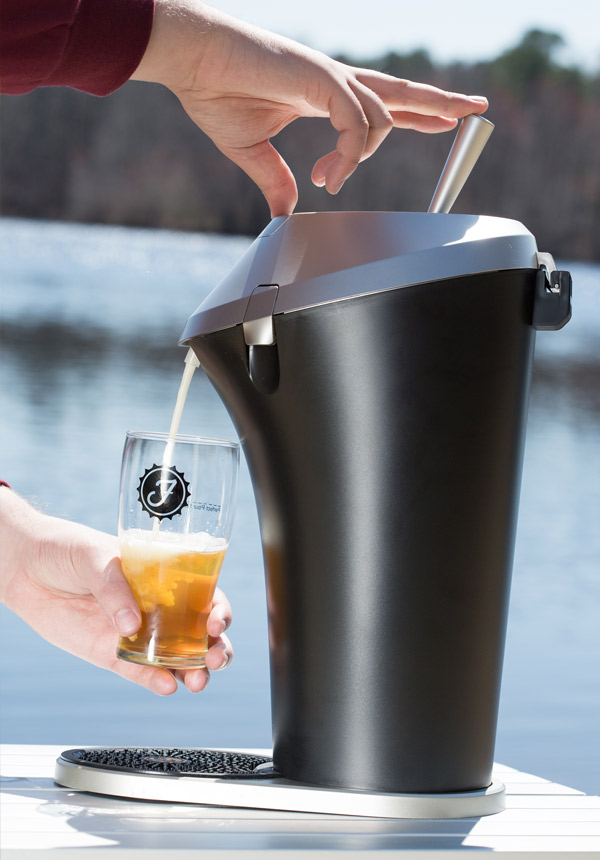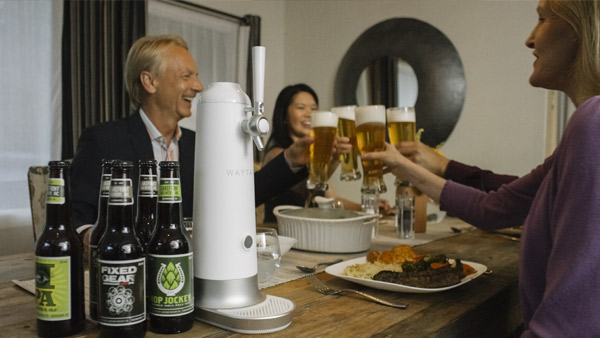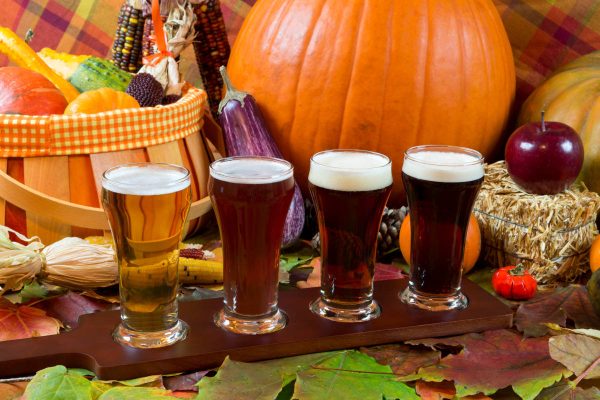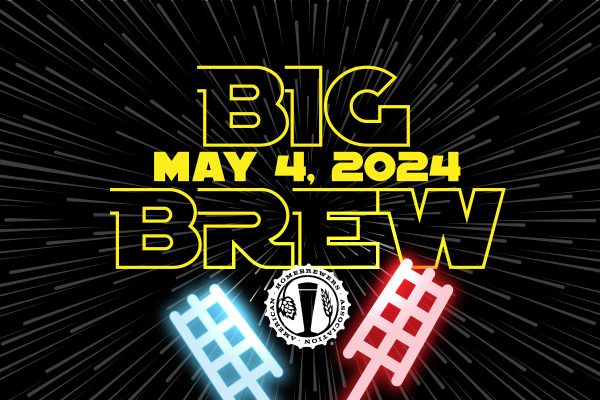
Has there ever been a greater time in history to be a beer lover? The answer, for me at least, is no. My love and passion for beer started when I was a seventeen-year-old high school student traveling throughout Europe. I remember buying my first beer from a bottle shop in Brussels – a 10% ABV Belgian Dark Strong Ale that rocked my taste buds and opened my eyes to the possibilities of what a beer could be. A few years later, while studying abroad in college, I found myself traveling throughout Europe again, this time trying as many new beers as I could from countries like England, Belgium, Netherlands, Czech Republic, Germany, and Austria. By the time I returned to the US, I had developed a refined palate and an insatiable taste for new and exotic brews. The timing couldn’t have been any better. The American craft beer renaissance was in full swing, and microbreweries were opening up every day throughout the country and churning out unique ales and new interpretations of traditional European beer styles.
The first day I returned from Europe, I ordered a homebrewing kit and an assortment of books about beer and brewing. It wasn’t long before I found myself deep in the rabbit hole that so many homebrewers and beer lovers find themselves in. A couple of years later, after taking a course in brewing science, I decided to enroll in the International Master Brewer’s Program at the Siebel Institute of Technology in Chicago and Doemens Academy in Munich, Germany. My knowledge of beer and brewing grew by leaps and bounds during this advanced, accelerated program. Professors were flown in from all over the world to teach their areas of expertise, and I was able to study alongside some amazing people. We toured dozens of breweries and visited maltsters, equipment manufactures, hop farms, and biergartens dotted across the US and continental Europe. Being deeply immersed in the world of beer and brewing was by far one of the coolest experiences of my life, and I learned some very valuable lessons. One of these lessons was the importance of quality beer foam. And yes, there are major differences in foam quality which drastically affect the overall beer-drinking experience.
While at Doemens Academy in Munich, I will never forget what my favorite professor told me about the importance of beer foam in German culture. He said, with a smile on his face, that in the biergartens of Munich, Germans would typically pay around €7 for a liter of lagerbier served in the traditional, dimpled, Baravian Siedel mug– €6 of which was for the first few gulps of foamy goodness and €1 for the rest of the liter. Although intended partially as a joke, it did contain an important truth about beer foam. Germans, who are well known for their many scientific contributions to the brewing industry, understand the many benefits foam has on beer and the entire sensory drinking experience. Besides being aesthetically pleasing, the foam releases volatile aroma compounds, which enhance the flavor perception of the beer. Foam also contributes to the beer’s mouthfeel and texture, while serving as a protective, insulating layer over the liquid to maintain its carbonation level, body, and temperature.

Upon receiving my Master Brewer Program diploma, I began my brewing career at Weyerbacher Brewing Company in Pennsylvania and also earned the title of Certified Cicerone. I had a blast working in the brewery environment alongside industry veterans and learned so much during my time there. A few months ago, I got a chance to meet and have a great conversation with Philip Petracca, the cofounder of a new and exciting tech startup company called Fizzics that is focused on the dispensing side of the beer business. We talked about the future of the beer industry, challenges that brewery owners and brewmasters face, the importance of a quality foam, and how critical dispensing is to the overall beer drinking experience. The latter was a subject that really struck a chord with me, having just spent so much of my time studying the many benefits of a proper pour and head of foam. When I learned about the draft beer dispensing technology platform that Fizzics had developed to maintain CO2 levels and provide an ideal-density Micro-Foam™ from ordinary store bought beer, I was intrigued and decided to join them in their efforts to bring about a whole new way to dispense and enjoy beer.
It’s universally known that draft beer tastes better than the same beer poured from a can or bottle. The main reason for the difference has to do with CO2 levels and the quality of the beer foam, or head. Draft beer gives more desirable head characteristics which, in turn, heighten the sensory experience. The vast majority of beer, however, is consumed from a packaged container, whether it be a bottle, can, or growler. The traditional way to serve a beer from a packaged container is to pour it down the inside of a clean glass at a 45-degree angle, then when the glass is halfway full, tilt it upright and pour vigorously down the middle to develop a 1-2” layer of foam. The problem with this technique is that a majority of the CO2 in the body of the beer is agitated to create a poor quality foam (sometimes perceived as harsh or grainy) that is comprised of bubbles of varying sizes. When there are bubbles of different sizes, the larger ones coalesce with the smaller ones and the foam quickly dissipates. Without a protective layer of foam, the CO2 gas escapes the agitated beer, causing it to go flat. Fizzics Group has come up with an innovative solution to these problems that virtually every beer drinker has encountered, and it involves the science of fluid dynamics and sound wave oscillation.

Fizzics has created a lightweight, portable draft beer dispensing system that gives packaged beer the desirable characteristics of draft beer and forms the most optimal quality head of foam possible. It is compatible with any sized can, bottle, or growler up to 64 ounces and requires no refillable CO2 or nitrogen gas cartridges, just AA batteries. Simply place an opened can, bottle, or growler into the unit, insert the feed tube, and close the lid. Pull the tap handle forward to dispense the beer under pressure at a controlled flow rate so as not to agitate the CO2 out of solution. The inside chamber is pressurized so the system doesn’t suck the beer up, it pushes the beer down the bottle/can/growler and up to the tap. To top the beer with foam, push the tap handle backwards and the beer passes through a sound wave oscillator that controls the process of nucleation. The oscillator breaks up the natural CO2 in the beer to form a dense, compact layer of uniformly sized Micro-Foam bubbles. This Micro-Foam has a greater surface area than typical beer foam, so more volatile aroma compounds are released to the nose, enhancing the flavor perception. It also has much longer head retention than beer poured from a packaged container, which preserves the body, carbonation level, and temperature of the beer all the way to the last sip. Additionally, the quality of the Fizzics Micro-Foam makes for a smoother mouthfeel and more pleasant drinking experience when compared to the sometimes harsh and grainy characteristics of ordinary foam.
The Fizzics Micro-Foam technology has the potential to revolutionize the already amazing beer industry by giving brewers a whole new element of control. A proper head of foam is integral to the drinking experience of beer and, now, we will be able to enjoy the world’s greatest beverage the way the brewers intended. My German professor will be delighted to know that finally the value of his hard earned money will be evenly distributed from the first refreshing sip to the last frothy gulp of beer! Cheers!




Share Post